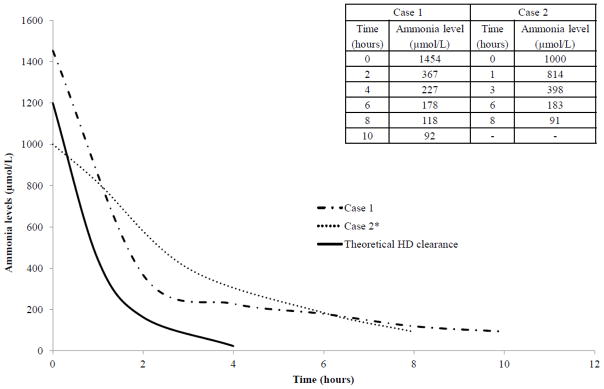Figure 1.

Our patients’ continuous renal replacement therapy (CRRT) prescription produced clearance comparable to HD, without significant ammonia rebound, hypotension, or electrolyte abnormalities. The actual decrease in ammonia concentration for Case 1 and Case 2 (both treated with high-dose CRRT) is compared to the theoretical clearance over time that can be achieved with intermittent hemodialysis (HD). The theoretical HD clearance was based on a blood flow of 30 ml/min, an initial ammonia level of 1200 μmol/l, a patient weight of 3 kg (total body water of 0.6 ml/kg), and an ammonia clearance = −natural log (concentration at time X/concentration at time zero). Because in Case 2, the first circuit clotted after 45 minutes due to mechanical obstruction of the RRT catheter, we illustrate the decrease in ammonia after the start of the second circuit. We assumed that the initial ammonia level was 1000 μmol/l based on the last exact value (1043 μmol/l) one hour prior to initiation of the second circuit (the ammonia level fifteen minutes before the start of the second circuit was reported as >1000 μmol/l as the lab did not dilute the sample to obtain the exact concentration). In both cases, the ammonia fell to <200 μmol/l within 6 hours of CRRT initiation.
